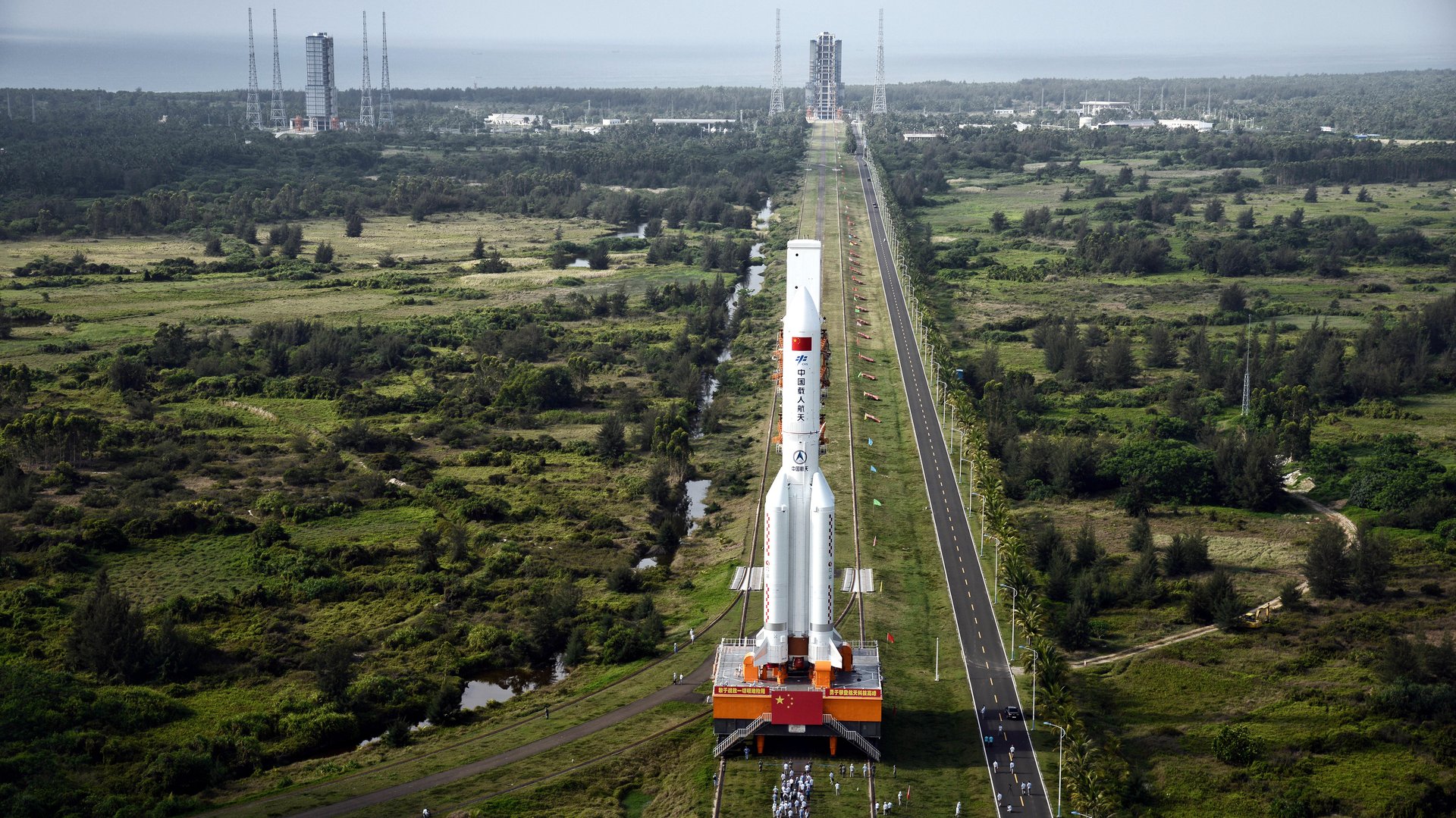A Chinese rocket appears to rain rogue parts down from space
The space debris problem is hitting home, literally.


The space debris problem is hitting home, literally.
Last week, China’s space program debuted a new rocket that expands its ability to do big projects in low-Earth orbit. The launch of the Long March 5B demonstrated a new space capsule for carrying astronauts to orbit. It also appears to have dropped a large metal object on a town in Cote d’Ivoire.
Local news sources reported that residents heard a loud bang and then discovered what appears to be a rocket part. Luckily, it did not injure anyone.
Harvard-Smithsonian Institute astrophysicist Jonathan McDowell, who tracks activity in orbit, noted that the path of the rocket, abandoned after it successfully delivered the capsule to orbit, would have passed over the town in question.
Typically, rocket bodies that have completed their work are discarded over the open ocean or maneuvered into long-term disposal orbits where they won’t affect people or other spacecraft. China has a spotty history with this, however, frequently dropping rocket stages in populated areas near its own launch sites.
In this case, the rocket’s design made things even more difficult. Rather than using two stages, the vehicle only has a single core and four disposable boosters. That means that the rocket body that reaches orbit and then re-enters is unusually large. Normally, the larger first stage is disposed of earlier in the mission, leaving just the smaller second stage in orbit. Chinese space engineers will likely face international pressure to adjust the rocket’s flight profile to ensure future missions don’t scatter debris over other countries—in this case, the vehicle passed over New York City less than an hour before it broke back into the atmosphere.
McDowell says this is likely the largest uncontrolled re-entry since a Soviet space station broke up 1991. When larger satellites or space stations are retired, engineers attempt to steer them to a remote section of the South Pacific called the spacecraft cemetery. Residents include the former Mir space station, numerous uncrewed supply spacecraft, and—almost—the first Chinese space station, Tiangong-1, which crashed into the Pacific a few thousand kilometers away from the aquatic boneyard.